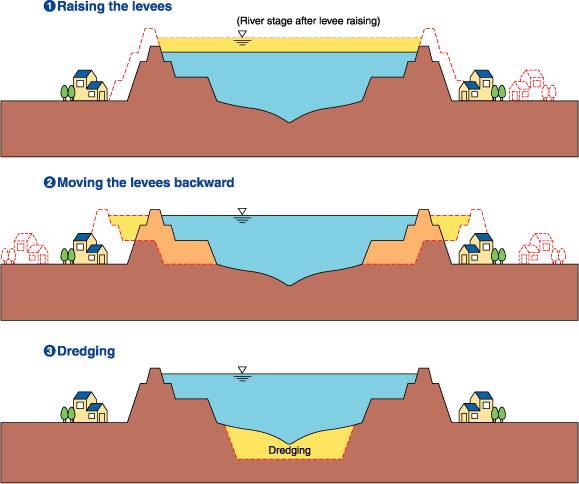River Improvement
Since the upstream region of the Nagara River is mostly unsuitable for dam building, one of the problems involved in flood protection is that the river course itself needs to be made to cope with larger discharge volumes. The basic plan for the Kiso water system project therefore involves adjusting the peak discharge to cope with 8,000 m3/sec using an upstream dam, allowing 7,500 m3/sec to flow down safely through the river course (downstream from Chusetsu). Improvement work is now going on based on this plan.
To allow flood volumes of 7,500 m3/sec to drain safely, it is necessary to extend the cross-sectional area of the river. This can be done in the following ways:
- Building high levees (raising the levees)
- Extending the river width (moving the levees backward)
- Deepening the river bed (dredging)
If the levees were raised, however, floodwater would flow at a higher level and increase the damage if the banks were to collapse. In addition, a number of bridges, including the Shinkansen bridge, would need to be rebuilt. If the levees were moved backward, valuable land and a large number of houses along the river would have to be relocated. Both of these methods are therefore unrealistic, leaving dredging as the best method, since this can be carried out promptly within the river. It has therefore been decided to dredge the river bed in a downstream section of the Nagara River in order to achieve the cross-sectional area in the river that is needed to allow floodwater to drain.
Methods of Increasing the Cross-sectional Area of the River
